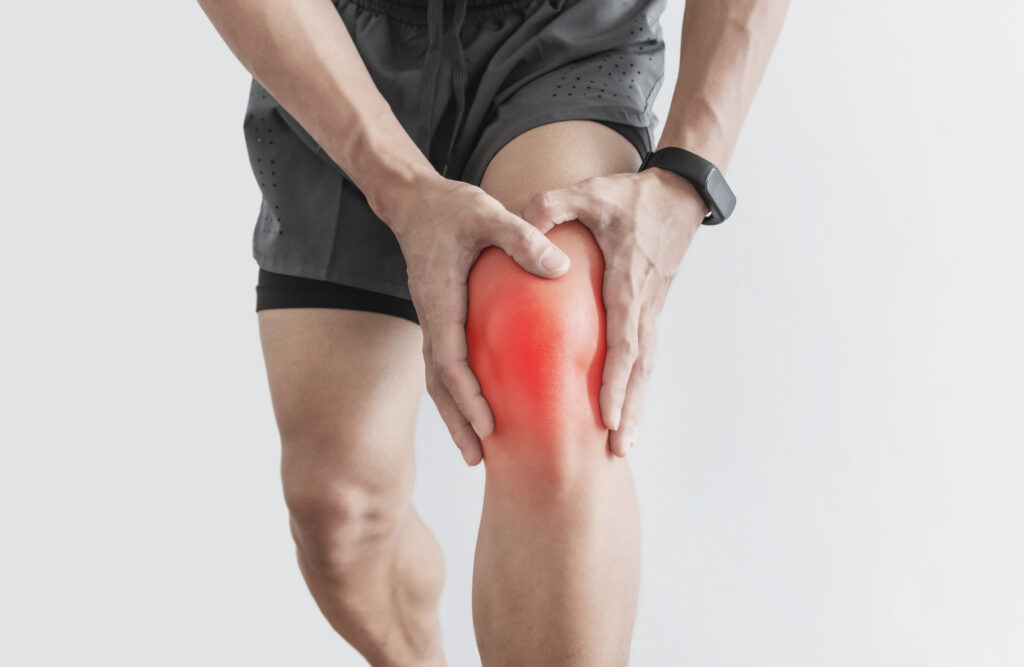
The physical and emotional toll can be overwhelming when you've suffered an injury due to someone else's negligence. While medical bills and lost income are often straightforward to document, proving Pain and suffering can be more challenging. This intangible aspect of your injury claim is nonetheless a significant component of the compensation you may receive.
Here, a personal injury lawyer will help you explore the various methods and strategies you can employ to effectively demonstrate your pain and suffering to insurance companies, judges, and juries. By understanding these approaches, with the help of a Waukegan personal injury lawyer or attorney, you can actively pursue the full and fair compensation you deserve.
Waukegan Personal Injury Guide
- Understanding Pain and Suffering in Personal Injury Cases
- Documenting Your Physical Pain
- Demonstrating Emotional Distress
- The Role of Medical Evidence in Proving Pain and Suffering
- Quantifying Your Pain and Suffering
- Demonstrating Loss of Enjoyment of Life
- Overcoming Insurance Company Tactics
- The Litigation Process and Pain and Suffering
- The Role of Personal Injury Lawyers in Proving Pain and Suffering
- Seek Professional Support from a Personal Injury Lawyer
Understanding Pain and Suffering in Personal Injury Cases
Before looking into the methods of proving pain and suffering, it's important to understand what this term encompasses in the context of personal injury law. Pain and suffering refer to the physical discomfort and emotional distress a person experiences due to an injury. This can include physical pain from injuries, emotional distress such as anxiety, depression, or PTSD, loss of enjoyment of life, inconvenience and disruption to daily activities, and stress on relationships with family and friends.
Unlike economic damages like medical expenses or lost income, pain and suffering are non-economic damages. These damages are more subjective and can vary significantly from case to case. This subjectivity is precisely why providing strong evidence of your pain and suffering is so important.
Documenting Your Physical Pain
One of the first steps in proving your pain and suffering is to thoroughly document your physical pain. This process begins immediately after your injury and continues throughout your recovery. Start a daily log where you record your pain intensity, location, and duration. Use a pain scale from 1 to 10 to quantify your discomfort. Note how your Pain affects your daily activities, sleep patterns, and overall quality of life.

Regular visits to your healthcare providers create a paper trail of your ongoing pain and treatment efforts. Be honest and thorough when describing your symptoms to medical professionals, as their notes will become part of your medical records. Adhering to your doctor's recommendations demonstrates that you're taking your recovery seriously. This includes attending physical therapy sessions, taking prescribed medications, and following activity restrictions.
Keep track of activities you can no longer perform or cause significant pain. This can include household chores, hobbies, or work-related tasks. Visual evidence can be compelling, so take pictures of visible injuries, bruising, or swelling over time to show the progression of your recovery. Those close to you can provide valuable testimony about how your injuries have affected your daily life and behavior.
Demonstrating Emotional Distress
Emotional distress is often an overlooked aspect of pain and suffering, but it can be just as debilitating as physical pain. Proving emotional distress requires a different approach, as the symptoms are not always visible. Consulting with a therapist, psychologist, or psychiatrist can provide professional documentation of your emotional state. Their evaluations and treatment plans serve as evidence of your psychological struggles.
Like a pain journal, record your thoughts, feelings, and emotional challenges. Note any changes in mood, sleep patterns, appetite, or social interactions. If you've had to give up activities you once enjoyed or have experienced changes in your relationships due to your emotional state, record these impacts.
Family members, friends, or coworkers can provide statements about changes they've observed in your behavior or demeanor since the injury. In some cases, psychological evaluations or neuropsychological testing may be appropriate to objectively measure the impact of your emotional distress. If you've received prescriptions for anxiety medications, depression, or other mental health concerns related to your injury, this can serve as tangible evidence of your emotional distress.
The Role of Medical Evidence in Proving Pain and Suffering
Medical evidence plays a fundamental role in substantiating your claims of pain and suffering. While your accounts and documentation are important, objective medical evidence adds significant weight to your case. Your complete medical records, including emergency room visits, hospital stays, doctor's appointments, and therapy sessions, provide a chronological account of your injuries and treatment. These records often include notes on your reported pain levels and observed symptoms.
X-rays, MRIs, CT scans, and other imaging studies offer visual proof of your injuries. These can be particularly compelling when demonstrating the severity of your condition to insurance adjusters or a jury. Your treating physicians can provide professional opinions on the extent of your injuries, the expected duration of your recovery, and any long-term or permanent effects. These professional opinions can significantly strengthen your claim for pain and suffering.
Documented treatment plans, including physical therapy regimens, pain management strategies, and prescribed medications, underscore the ongoing nature of your pain and the efforts required to manage it. Functional capacity evaluations, often performed by occupational therapists, objectively measure your physical limitations and capabilities following your injury. Suppose your pain is severe or chronic enough to warrant treatment at a specialized clinic. In that case, these records can be particularly powerful in demonstrating the intensity and persistence of your suffering.
Quantifying Your Pain and Suffering
One of the challenges in proving pain and suffering is assigning a monetary value to your experiences. While there's no universal formula for calculating pain and suffering damages, there are several methods that personal injury lawyers and insurance companies may use to quantify these non-economic damages.
This method multiplies your economic damages (lost income, medical bills) by a factor typically ranging from one and a half to five, depending on your injuries. The per diem method gives a day-to-day rate to your pain and suffering and multiplies it by the number of days you experience pain. The daily rate might be calculated based on your earnings or another suitable figure.
Your personal injury attorney may research similar cases in your jurisdiction to determine how courts have awarded damages for pain and suffering in the past. This can provide a benchmark for negotiating your claim. Some attorneys prefer to break down pain and suffering into specific categories and assign values based on the evidence presented.
It's important to note that these methods are starting points for negotiation or litigation. The final value of your pain and suffering damages will depend on various factors, including the strength of your evidence, the skill of your personal injury lawyer, and the specific circumstances of your case.
Demonstrating Loss of Enjoyment of Life
An often-overlooked aspect of pain and suffering is the loss of enjoyment of life. This refers to the inability to participate in activities or hobbies that once pleased you. Create a "before and after" picture to prove this aspect of your claim. Document the activities you regularly enjoyed before your injury and contrast them with your current limitations.
Provide specific examples of how your life has changed. For instance, instead of making general statements, offer concrete examples like "I used to play tennis three times a week, but now I can't even hold a racket without pain." If appropriate, consider creating a video or photo montage that shows you engaging in activities before your injury and your current limitations.
Gather community testimony from coaches, instructors, or group leaders from activities you can no longer participate in. They can provide statements about your previous level of involvement and the impact of your absence. By clearly demonstrating how your injury has diminished your quality of life, you strengthen your claim for pain and suffering compensation.
Overcoming Insurance Company Tactics
Insurance companies often use various tactics to minimize pain and suffering claims. Awareness of these strategies can aid you and your personal injury lawyer in effectively countering them. Insurance companies may deliberately slow the claims process, hoping you'll become frustrated and settle for less. They may argue that your injuries are not as severe as you claim or unrelated to the incident.
As mentioned earlier, insurance companies may conduct surveillance to catch you engaging in activities that contradict your limitations. Insurers or opposing parties may scrutinize your online presence for posts or photos that can undermine your claim. Adjusters might push for a quick settlement before the full extent of your injuries and suffering is known. They may attempt to misrepresent the extent of the policy coverage or your rights under the policy.
To combat these tactics, maintain open communication with your personal injury attorney, follow their advice regarding social media use and public activities, and be patient with the process. A skilled personal injury lawyer can anticipate and counter these strategies, protecting your rights.
The Litigation Process and Pain and Suffering
Proving pain and suffering becomes even more formal if your case proceeds to litigation. You may be required to give a deposition, where you'll answer questions under oath about your injuries and their impact on your life. Your personal injury attorney will prepare you for this process. Medical professionals may testify about the nature and extent of your injuries and the expected long-term effects.
Be prepared for the defense attorney to challenge your pain and suffering claims. They may question the consistency of your statements or the extent of your limitations. Selecting jurors who empathize with your situation becomes important if your case goes to trial. Your personal injury lawyer will be involved in this process.
All the documentation and evidence you've gathered will support your claim for pain and suffering damages. Your attorney will summarize the evidence and argue for fair compensation for your Pain and suffering in their closing arguments. Your personal injury attorney will guide you through the litigation process, ensuring that your pain and suffering claim convinces effectively.
The Role of Personal Injury Lawyers in Proving Pain and Suffering
Personal injury lawyers play a vital role in helping you prove your pain and suffering. Their experience and knowledge can significantly impact the outcome of your case. They can assess the strength of your pain and suffering claim and advise you on the potential value of your case. Personal injury lawyers know what evidence is most compelling and can help collect and organize it effectively.
They can develop a strategy tailored to your case, considering all aspects of your pain and suffering. Experienced personal injury attorneys are skilled negotiators who can advocate on your behalf with insurance companies. They often have relationships with medical professionals who can provide professional opinions to support your claim.

Personal injury lawyers understand the legal process and can ensure the correct filing of all necessary documents and meeting deadlines. If your case goes to court, a personal injury attorney can present your case effectively to a judge and jury. Dealing with pain and suffering can be emotionally draining. A compassionate personal injury lawyer can provide support and guidance throughout the process.
By working closely with a personal injury attorney, you increase your chances of successfully proving your pain and suffering and receiving fair compensation. They not only provide legal experience but also offer valuable support and advocacy throughout the process. Their dedication to your case ensures thorough preparation of all necessary documentation and strategic planning to navigate any legal challenges that may arise.
Seek Professional Support from a Personal Injury Lawyer
Proving pain and suffering in a personal injury case is a multifaceted process that requires diligence, consistency, and strategic planning. By thoroughly documenting your physical pain, emotional distress, and the overall impact on your quality of life, you create a solid foundation for your claim.
Remember to keep detailed records of your pain and limitations, seek appropriate medical and mental health treatment, gather supporting evidence from various sources, maintain consistency in your statements and actions, and work closely with a personal injury lawyer who can guide you through the process.
While the journey to proving your pain and suffering can be challenging, it's crucial to securing the compensation you deserve. With the right approach and professional support from a personal injury attorney, you can effectively communicate the full extent of your suffering, providing compelling evidence to substantiate your claim. Their experience ensures that every aspect of your case is meticulously prepared, from gathering medical records to presenting professional testimony, all aimed at achieving a fair resolution and justice for your injuries.
